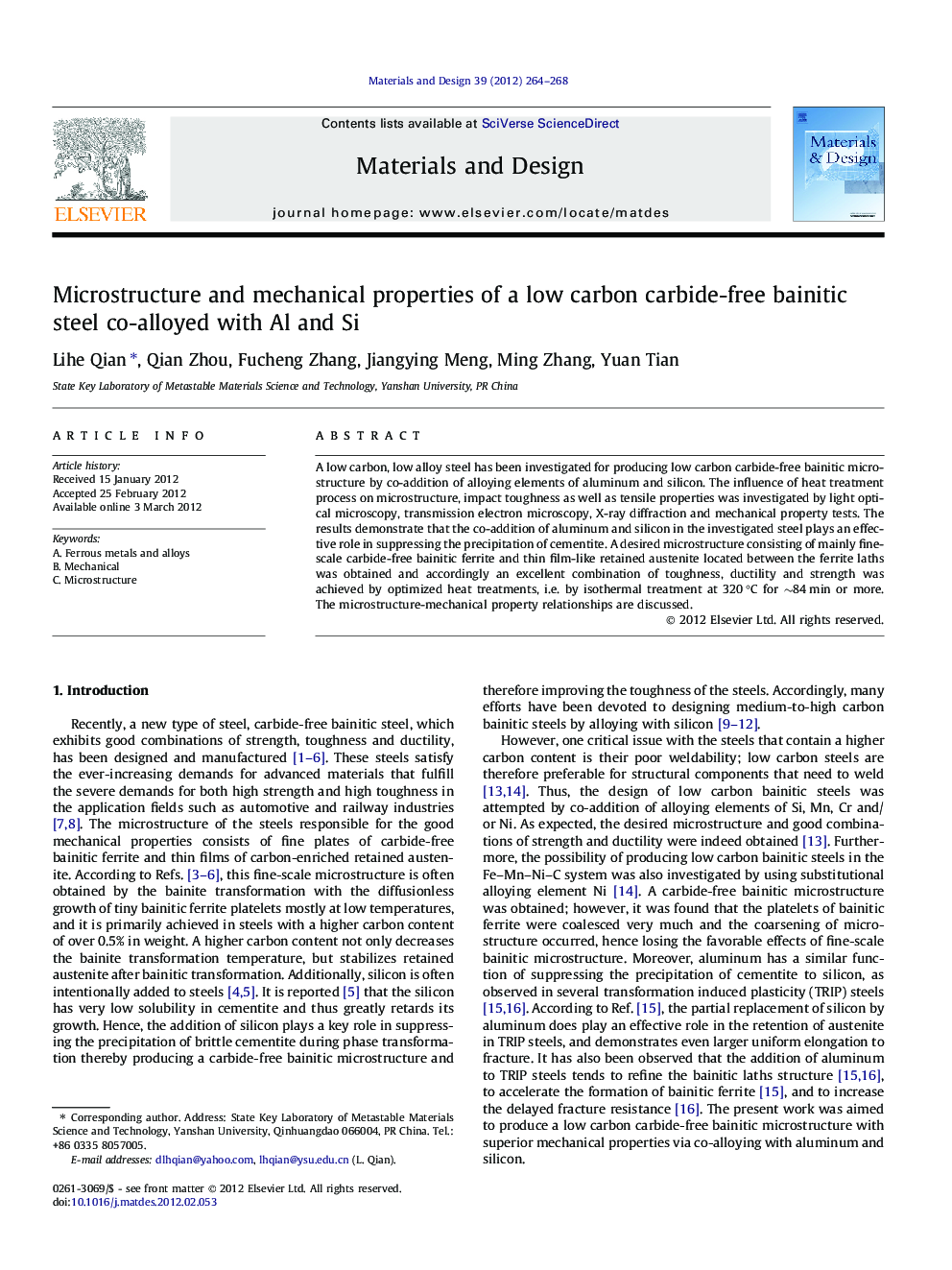| Article ID | Journal | Published Year | Pages | File Type |
|---|---|---|---|---|
| 830671 | Materials & Design (1980-2015) | 2012 | 5 Pages |
A low carbon, low alloy steel has been investigated for producing low carbon carbide-free bainitic microstructure by co-addition of alloying elements of aluminum and silicon. The influence of heat treatment process on microstructure, impact toughness as well as tensile properties was investigated by light optical microscopy, transmission electron microscopy, X-ray diffraction and mechanical property tests. The results demonstrate that the co-addition of aluminum and silicon in the investigated steel plays an effective role in suppressing the precipitation of cementite. A desired microstructure consisting of mainly fine-scale carbide-free bainitic ferrite and thin film-like retained austenite located between the ferrite laths was obtained and accordingly an excellent combination of toughness, ductility and strength was achieved by optimized heat treatments, i.e. by isothermal treatment at 320 °C for ∼84 min or more. The microstructure-mechanical property relationships are discussed.
Highlight► A low carbon carbide-free bainitic steel was produced. ► Co-alloying with Al and Si suppresses the precipitation of cementite. ► Fine carbide-free bainite laths and thin film-like retained austenite obtained. ► Excellent combination of strength, ductility and toughness enabled.
